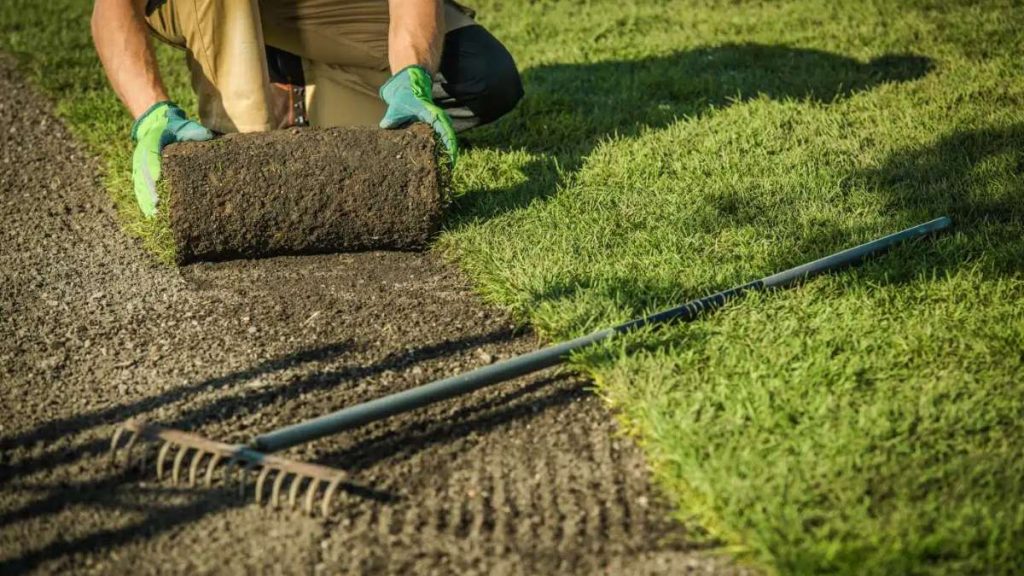Introduction
What is Community Gardening?
Community gardening is the practice of growing fruits, vegetables, flowers, or other plants in shared public spaces. These gardens can be found in urban, suburban, and rural areas and are often managed collectively by community members. The concept revolves around shared stewardship, where individuals work together to grow produce, often on public or semi-public land. The aim is not only to grow plants but to foster a sense of community, provide access to fresh, nutritious food, and create green spaces in areas that might otherwise be devoid of them.
Community gardens often take the form of vacant lots, rooftops, or schoolyards converted into productive spaces for gardening. These gardens may have individual plots tended by families or communal beds where all participants share the workload and the produce. Regardless of the model, the essence of community gardening lies in its cooperative nature and its ability to unite people for a common cause.
Why Community Gardening Matters?
Community gardening offers a host of benefits, making it a vital part of urban planning and social wellness. It promotes access to fresh produce, especially in urban areas where healthy, affordable food is often hard to come by. Additionally, these gardens support physical and mental health by encouraging physical activity, reducing stress, and allowing people to engage with nature. On an environmental level, they help combat urban sprawl, reduce pollution, and promote biodiversity by providing a habitat for pollinators like bees and butterflies.
Community gardening is especially impactful in combatting food insecurity. In many cities, particularly in low-income neighborhoods, residents live in “food deserts” where access to fresh fruits and vegetables is severely limited. Community gardens provide a solution by growing fresh, nutritious produce in these areas, empowering people to feed themselves and their families.
Types of Community Gardens
Community gardening isn’t one-size-fits-all. Different types of community gardens serve different purposes, depending on the community’s needs, location, and resources.

Urban Community Gardens
Urban gardens are typically located in densely populated areas where green space is limited. These gardens bring a slice of nature to cities, providing fresh produce to residents who may not have access to private yards or healthy grocery stores. They also contribute to the environmental health of cities by reducing the urban heat island effect, where concrete and asphalt retain heat and increase temperatures.
School Gardens
School gardens are designed to educate children about agriculture, sustainability, and nutrition. These gardens give students hands-on experience in growing food, learning about ecosystems, and understanding the value of fresh, local produce. Produce from these gardens often supplements school meals, providing healthy food options for students while teaching them the importance of good nutrition.
Institutional Gardens
These gardens are often found at hospitals, churches, or correctional facilities and are used to promote rehabilitation, therapy, and well-being. For instance, hospital gardens may serve as therapeutic spaces where patients and their families can relax, while gardens at correctional facilities are sometimes used in rehabilitation programs, teaching inmates valuable skills and fostering responsibility.
Demonstration Gardens
Demonstration gardens are designed to educate the public about gardening techniques, sustainable practices, and environmental stewardship. These gardens often showcase different planting methods, composting techniques, or water conservation strategies. They serve as educational hubs where community members can learn how to start and maintain their own gardens.
Benefits of Community Gardening

Health Benefits
Community gardening offers numerous physical and mental health benefits. The physical activity involved in gardening—digging, planting, weeding—provides exercise, which is crucial for maintaining physical health. Beyond physical fitness, studies show that engaging with nature reduces stress and improves mental well-being. The therapeutic benefits of working in a garden can help alleviate anxiety, depression, and other mental health challenges.
Gardening is also known to promote healthier eating habits. Participants in community gardens have greater access to fresh produce, which encourages them to consume more fruits and vegetables. This access to fresh, healthy food is especially important in low-income areas where nutritious options are scarce.
Environmental Benefits
Community gardens contribute to environmental sustainability in several ways. First, they help improve air and soil quality by adding green space to urban areas and reducing carbon emissions. By growing plants, gardens help absorb pollutants, improving the overall air quality. Additionally, community gardens often use sustainable practices such as composting, which reduces waste by turning organic material into nutrient-rich soil.
These gardens also promote biodiversity by providing habitats for pollinators like bees, butterflies, and birds. This is especially important in urban environments where natural habitats are often scarce. By increasing the number of green spaces, community gardens help create more resilient ecosystems.
Social Benefits
Community gardens act as social hubs, bringing together people from diverse backgrounds to work toward a common goal. This fosters a sense of community and helps bridge social divides, creating stronger, more cohesive neighborhoods. These gardens also offer a space for social interaction, where people can connect, share knowledge, and support one another. The sense of pride and ownership that comes from participating in a community garden can help improve the overall well-being of individuals and the community as a whole.
In some urban areas, community gardens have been shown to reduce crime rates by providing constructive activities and beautifying neighborhoods. When vacant lots are turned into productive spaces, they become less attractive to criminal activity, contributing to a safer, more inviting environment.
Food Security
One of the most significant benefits of community gardening is its role in combatting food insecurity. In many cities, especially in low-income or underserved areas, access to fresh, affordable food is limited. These “food deserts” force residents to rely on fast food or convenience stores, which often lack nutritious options. Community gardens offer a solution by growing fresh fruits and vegetables locally, providing residents with access to healthy, affordable food.
Steps to Starting a Community Garden

Identify a Location
The first step in starting a community garden is finding a suitable location. The site should have access to sunlight, water, and good soil. If the soil is contaminated, raised beds may be used to ensure safe growing conditions. Vacant lots, rooftops, schoolyards, or public parks can all be good locations for a community garden.
Gather Community Support
For a community garden to succeed, it’s essential to engage local residents. Organizing a meeting to discuss the potential garden can help gauge interest and gather volunteers. Forming a garden committee can help distribute responsibilities, from organizing volunteer schedules to managing the budget. Community involvement is crucial for the long-term success of the garden.
Design the Garden
Once a location has been secured and community members are on board, the next step is designing the garden. Consider how much space is available and how it will be used. Will the garden have individual plots for families, or will it be communal? Be sure to plan for pathways, seating areas, and spaces for composting. Creating a well-organized layout can help ensure the garden is functional and easy to maintain.
Secure Funding
Starting a community garden requires funding for materials like seeds, soil, tools, and fencing. Grants, donations, and community fundraising efforts can help cover these costs. Many nonprofit organizations and government agencies offer grants to support urban agriculture and community gardening projects.
Overcoming Challenges in Community Gardening
Soil Contamination
In urban areas, soil contamination is a common issue, particularly in vacant lots that may have been exposed to industrial pollutants or chemicals. To mitigate this, it’s important to test the soil before planting. Raised beds can also be used to avoid direct contact with contaminated soil and provide a safer growing environment.
Land Ownership and Permissions
Securing land for a community garden can be challenging, particularly if the garden is located on a vacant lot or public land. It’s crucial to obtain permission from landowners and, if necessary, set up lease agreements to ensure the garden can operate legally. Many cities offer programs that make it easier for community groups to access land for gardening projects.
Ongoing Maintenance
Maintaining a community garden requires a consistent effort. Without a plan in place, gardens can become overgrown and neglected. Creating a schedule for volunteers and organizing regular workdays can help ensure the garden remains well-kept. Additionally, securing long-term funding or sponsorships can help cover the costs of seeds, tools, and maintenance.
How Community Gardening Improves Urban Areas

Reduces Crime
Community gardens have been shown to reduce crime in urban neighborhoods by cleaning up vacant lots and creating spaces for positive social interaction. By converting neglected areas into vibrant green spaces, gardens can make neighborhoods safer and more welcoming. Studies have demonstrated a correlation between community gardens and lower crime rates in urban areas.
Increases Property Value
Well-maintained community gardens can also increase property values by making neighborhoods more attractive to potential buyers. Green spaces are highly desirable in urban environments, and properties located near community gardens often see an increase in value. This is especially true in cities where access to green space is limited.
Promotes Environmental Sustainability
Community gardens play a significant role in promoting environmental sustainability by reducing the environmental impact of food production. By growing food locally, they cut down on the “food miles” involved in transporting produce from distant farms to urban markets, thereby reducing carbon emissions. Additionally, many community gardens incorporate sustainable practices like composting, which helps divert organic waste from landfills and enriches the soil. These gardens also improve urban microclimates by adding greenery, which helps cool the environment, absorb pollutants, and improve overall air quality.
Conclusion
The Power of Community Gardens
Community gardens offer a wide range of benefits that contribute to the overall well-being of urban and rural communities alike. They provide access to fresh, nutritious food, particularly in food deserts, and serve as a means of fostering social interaction, improving physical and mental health, and enhancing environmental sustainability. Moreover, by transforming vacant or underutilized land into vibrant, productive spaces, community gardens can reduce crime, increase property values, and promote a sense of ownership and pride among community members.
Encouragement to Get Involved
If you’re interested in contributing to your community’s well-being, consider getting involved in a local community garden or starting one of your own. Whether through volunteering, donating resources, or simply participating in garden activities, you can play a role in creating a healthier, more sustainable, and connected community. Community gardens are more than just green spaces—they are hubs of learning, collaboration, and resilience that strengthen the fabric of the community. Join the movement today and help cultivate a brighter future for all.














